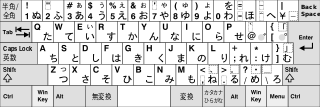
The demographics of Japan include Japanese population, birth and death rates, age distribution, population density, ethnicity, education level, healthcare system of the populace, economic status, religious affiliations, and other aspects regarding the population. As of February 2024, Japan's total population was roughly 124 million people, making it the 3rd-most populous country in the Asia-Pacific region, and the 11th-most populous country in the world.

Japanese people are an East Asian ethnic group native to the Japanese archipelago. Japanese people constitute 97.6% of the population of the country of Japan. Worldwide, approximately 126 million people are of Japanese descent, making them one of the largest ethnic groups. Approximately 122.0 million Japanese people are residents of Japan, and there are approximately 4 million members of the Japanese diaspora, known as Nikkeijin (日系人).
Racism in Japan comprises negative attitudes and views on race or ethnicity which are held by various people and groups in Japan, and have been reflected in discriminatory laws, practices and actions at various times in the history of Japan against racial or ethnic groups.

The Yamato people or the Wajin is a term to describe the ethnic group that comprises over 98% of the population of Japan. Genetic and anthropometric studies has showed that the Yamato are an admixture of the migratory Kofun and Yayoi, who arrived from mainland East and Southeast Asia via the Korean Peninsula, as well as the indigenous Jōmon that were already living on the Japanese archipelago for thousands of years prior.
Koreans in Japan comprise ethnic Koreans who have permanent residency status in Japan or who have become Japanese citizens, and whose immigration to Japan originated before 1945, or who are descendants of those immigrants. They are a group distinct from South Korean nationals who have immigrated to Japan after the end of World War II and the division of Korea.
Hāfu is a Japanese language term used to refer to a person of half Japanese and half non-Japanese ancestry. A loanword from English, the term literally means "half," a reference to the individual's non-Japanese heritage. The word can also be used to describe anyone with mixed-racial ancestry in general. As Japan is considered one of the most homogeneous societies on the planet, children who have one non-Japanese parent are called hāfu Japanese and often face prejudice and discrimination from Japanese citizens of full Japanese descent. Hāfu individuals are well represented in Japanese media and abroad, and recent studies in the 2010s estimate that 1 in 30 children born in Japan are born to interracial couples.

The most widely spoken language in Japan is Japanese, which is separated into several dialects with Tokyo dialect considered Standard Japanese.

Chinese people in Japan (在日中国人/華人) include any people self-identifying as ethnic Chinese or people possessing Chinese citizenship living in Japan. People aged 22 or older cannot possess dual-citizenship in Japan, so Chinese possessing Japanese citizenship typically no longer possess Chinese citizenship. The term "Chinese people" typically refers to the Han Chinese, the main ethnic group living in China (PRC), Taiwan (ROC) and Singapore. Officially, China (PRC) is home to 55 additional ethnic minorities, including people such as Tibetans, though these people might not self-identify as Chinese. Han Chinese people have had a long history in Japan as a minority.
There is a small community of Mongolians in Japan, representing a minor portion of emigration from Mongolia. As of June 2023, there were 17,976 registered Mongolian citizens residing in Japan, according to the Ministry of Foreign Affairs, up from 2,545 in 2003.
There is a significant community of Brazilians in Japan, consisting largely but not exclusively of Brazilians of Japanese descent. Brazilians with Japanese descent are known as Nikkei Brazilians. They constitute the largest number of native Portuguese speakers in Asia, greater than those of formerly Portuguese East Timor, Macao and Goa combined. Likewise, Brazil maintains its status as home to the largest Japanese community outside Japan.
Vietnamese people in Japan form Japan's second-largest community of foreign residents ahead of Koreans in Japan and behind Chinese in Japan, according to the statistics of the Ministry of Justice. By in June 2023, there were 520,154 residents. The majority of the Vietnamese legal residents live in the Kantō region and Keihanshin area.
Americans in Japan are citizens of the United States residing in Japan. As of June 2023, there were 62,425 American citizens registered as foreign residents of Japan, forming 2.0% of the total population of registered aliens, according to statistics from Japan's Ministry of Justice. This made Americans the ninth-largest group of foreign residents in Japan, having been surpassed in number by Vietnamese residents, Nepalese residents, Indonesian residents, and Burmese residents since 2011.
Bangladeshis in Japan form one of the smaller populations of foreigners in Japan. As of in June 2023, Japan's Ministry of Justice recorded 24,940 Bangladeshi nationals among the total population of registered foreigners in Japan.
Indians in Japan consist of those with Japanese citizenship and those with foreign citizenship.
There is a small population of Burmese people in Japan. In June 2023, there were 69,613 Burmese living in Japan.
Nigerians in Japan form a significant immigrant community. There are around 3,700 Nigerians living in the country. They mostly belong to the Nigerian Union in Japan, which is divided into sub-unions based on states of origin. The vast majority of Nigerians arrived in Japan from the mid-1980s onwards.
Britons in Japan make up one of the slightly larger foreign resident communities in Japan.
Ghanaians in Japan are Japanese people of full or partial Ghanaian ancestry or Ghanaians who became naturalized citizens of Japan.
Arabs in Japan consist of Arab migrants that come to Japan, as well as their descendants. In December 2016, there were 6,037 Arabs living in Japan.
Ethnic nationalism in Japan means nationalism that emerges from Japan's dominant Yamato people or ethnic minorities.






